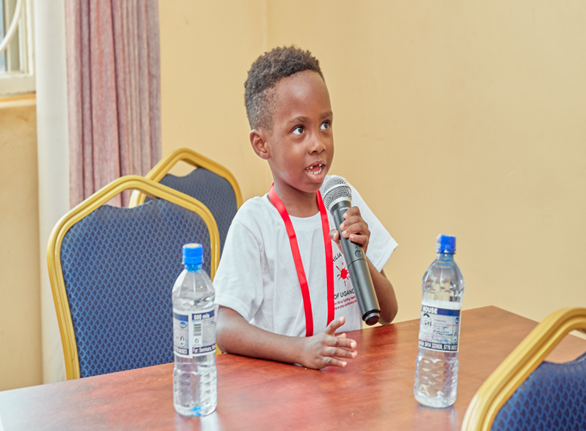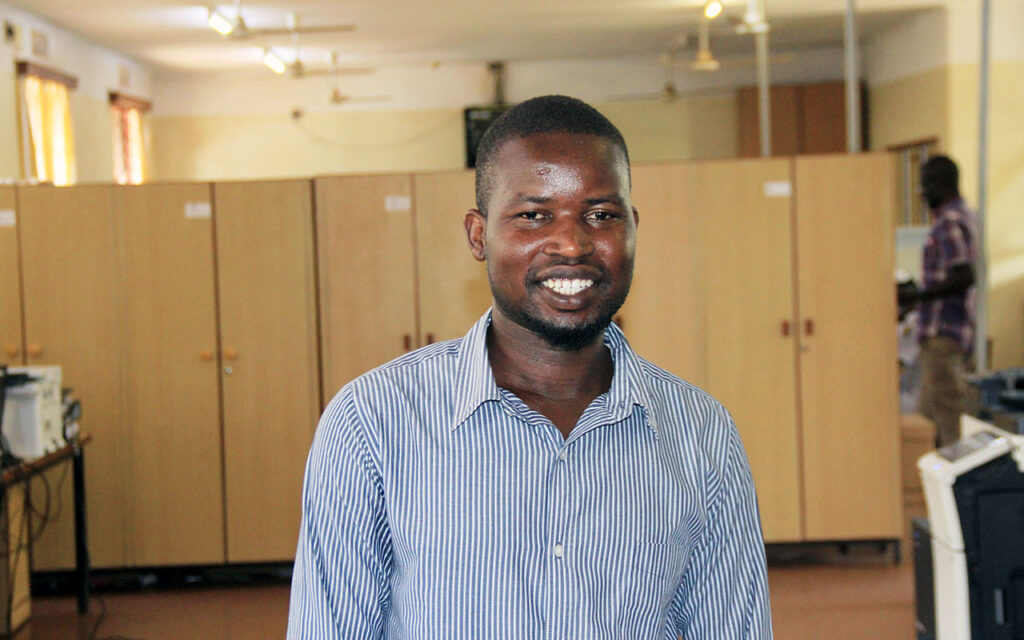Raising girls with Type 2A von Willebrand disease (part 1)
In the first part of a two-part blog about their family, Alex and Jo discuss how they feel about having girls with Type 2A von Willebrand disease, and how their different backgrounds and experiences have shaped their outlook.

Alex and Jo (pseudonyms) met in their late teens. As well as being the beginning of the relationship that would lead to a busy family life, it was the first time Jo had come across von Willebrand disease.
“I’d heard of haemophilia, but when Alex told me the name of the condition he had, I had no idea what it was,” says Jo.
Alex has Type 2A von Willebrand disease. Although his body produces von Willebrand factor, it doesn’t work properly, meaning he can experience frequent and heavy bleeding. His mother and sister are affected too.
“He explained it to me very simply,” Jo continues. “I just looked at him and thought he’s really confident, he doesn’t seem to not do things that he wants to do… I never saw it as a barrier.”
Deciding to have children
When Alex and Jo decided to have children, they knew there was a chance they would inherit von Willebrand disease. With a family history and his own experience of living with von Willebrand’s, Alex didn’t feel this should be a big consideration.
“I’ve learnt to live with the condition and I’ve normalised it – it’s just become part of my day-to-day life,” he says. “For me, it wasn’t a really big decision around having children… Having lived with it and normalised it, for me, von Willebrand’s wasn’t the main consideration; it was ‘Do we want children or don’t we want children?’”
Jo has always felt reassured by Alex’s confidence in living with von Willebrand’s. “How he is and how he lives his life is what I saw when we were younger and we decided to have children,” she says. “I was looking at Alex as the example, thinking ‘This is what you’ve done – you seem to be managing this really well.’”
Recognising von Willebrand’s
Alex and Jo now have a large family, including three girls with Type 2A von Willebrand disease. Their first daughter showed signs of having von Willebrand’s when she was born and was diagnosed later following a blood test. However, on the birth of their second child, Alex and Jo felt certain that she didn’t have von Willebrand’s.
“When she was born, we felt sure she didn’t have von Willebrand’s,” says Jo, “And as she progressed, weeks and months, we could just tell it was different. She was tested later, when she was four, and she didn’t have it.”
Again, when their other two daughters were born prematurely, Alex and Jo knew instinctively that they had von Willebrand’s – and early testing confirmed this. “We could tell straight away that they had it, just from the bruising from all the lines they had in – they were very tiny.”
Knowledge gaps and worry
Despite their confidence that von Willebrand’s shouldn’t get in the way of having children, Alex and Jo have found that being a parent responsible for children with von Willebrand’s raised other concerns. They enjoy a rich and active family life, but Jo’s confidence in Alex’s ability to live well with von Willebrand disease doesn’t overcome apprehension about her daughters’ safety.
“The difference is he’s my husband, he’s not my child,” Jo explains. “He’s an adult, he has adult care and he deals with his condition – and I’m not his mother. Having your own children with von Willebrand’s is very, very different.”
Jo feels particularly concerned about the comparative lack of knowledge about von Willebrand disease in general, including among medical staff. She says this has been a constant background worry since becoming pregnant with her first daughter.
“You worry all the time about ‘Does anybody really know what this condition is? If the baby is born in this hospital, are they going to know what to do? What if there’s an emergency situation? We can’t plan for everything but something could happen. The worry begins at that point and travels with you through life.”
Jo continues: “Whenever you go into hospital or see a doctor, nobody really seems to know what this condition is, and you are the expert. Some doctors allow you to have your say, give your expertise and trust what you are saying, and other doctors don’t. It’s a very difficult, vulnerable position to be in as a parent.”
Von Willebrand disease as a distraction
Alex has also found being the parent of a child with von Willebrand’s challenging when it comes to knowledge gaps among medical staff.
“We’ve been in hospital with the children for other things, and the doctors have had to go and look up von Willebrand’s. At that point, we know more than they do about the condition,” he says.
The problems that this can cause go beyond a lack of understanding about von Willebrand’s, though. Alex says once doctors recognise and understand (to a degree) the von Willebrand’s, it can sometimes get in the way of other issues. He recalls a particularly difficult time when this led to a delay in one of their youngest daughters being diagnosed with and treated for pneumococcal meningitis and septicaemia.
“I think the underlying piece is that the von Willebrand’s delayed treatments you would have if you didn’t have the von Willebrand’s – it became a distraction to what was actually wrong,” Alex explains. “She wasn’t bleeding… there was no need for any form of concern around bleeding.”
“She was crying, she was really unwell,” Jo adds. “It’s not like anything I’d seen before – and the doctor was just fixated on her bleeding condition… Her fever was high, they kept us in – not overnight, just observed us and sent us home. The next day, she was so bad, we rushed her back in.”
Jo continues: “I do understand that meningitis can be difficult to diagnose, but there was definitely an element of distraction. You need to be listened to as a parent. It’s scary, it feels vulnerable and very out of your hands, and you’re trusting everybody in that moment.”
Experience and outlook
Alex and Jo are both confident in advocating for their daughters in medical situations, but their different experiences mean von Willebrand’s impacts their outlook in different ways. Alex generally is generally more relaxed.
“I was brought up very much aware of my condition but not wrapped in cotton wool” says Alex. “It doesn’t impact my day-to-day life in my mind… It probably impacts me more than I like to think, but that’s just how I’ve been brought up and how I’ve dealt with it.”
He continues: “When the girls were young, all of the things that they were experiencing were the same as what I was experiencing. But there does come a time when actually they’re now experiencing things I could never experience, as a man. The bleeding condition has probably taken a different turn into the realm of things that I haven’t experienced as the girls have got older.”
Reflecting on the rollercoaster
Jo worries much more and finds family life with von Willebrand’s can sometimes feel relentless.
“I think the worry that you have around them, being a mum, even without other things to consider, is different from dads. Maybe not in every situation, but I feel in ours it is,” she says. “Having multiple children with the condition means that sometimes it’s more prevalent in your life. One might have had a nosebleed and you’re just out the other side, and then another one has a tooth falling out and another one has got stuff going on with her period… Sometimes no one has anything, but it’s very much a rollercoaster of extremes.”
Jo recognises the impact this has on her too: “Have I dealt with it well in terms of supporting my own mental health? Probably no… because it’s been a treadmill of continually going forward, never having time to reflect back on things.”
With our thanks to Alex and Jo for sharing their story with us.
Further information
A number of patient organisations and charities provide support and advocacy for people with bleeding disorders and their families. In the UK these include:
- The Haemophilia Society
- Haemophilia Scotland
- Haemophilia Wales
- Haemophilia Northern Ireland
- Local families with bleeding disorders
Further reading
‘Raising girls with Type 2A von Willebrand disease’ is part of a series about the parents of children with bleeding disorders. This also includes stories about the experiences of a mother whose daughter has Type 3 von Willebrand disease, and the parents of two boys with severe haemophilia A.
About the author
Kathryn Jenner is Communications and Community Manager at Haemnet Ltd.


